Wednesday I left the hostel and found the second hostel where I would spend the next two nights. It was raining, so I opted for an overview of the city with two bus tours covering different parts of the city.  I left the second tour mid-way and headed out on foot, starting at the new Scottish Parliament Building. The architecture is controversial, with a very modern design contrasting sharply with the Holyrood Palace across the street.
I left the second tour mid-way and headed out on foot, starting at the new Scottish Parliament Building. The architecture is controversial, with a very modern design contrasting sharply with the Holyrood Palace across the street.
Less controversial is the existence of the Scottish Parliament itself. This is a historic moment in Scotland’s history. The previous Parliament of Scotland was dissolved in 1707 when England and Scotland agreed to form Great Britian. The new parliament was created by the British Parliament in 1998 and began meeting in 1999. I took the opportunity of being there to visit the building and the parliament, listening in to part of an afternoon session discussing current laws relating to the treatment of “vulnerable witnesses,” including children. There is a growing movement afoot, although not a majority, for Scotland to dissolve its association with England and form a separate country.
From Parliament, I headed up Cannon Gate, the first part of the Royal Mile, between Holyrood and Edinburgh Castle. There is a fascinating little museum, The People’s Story, that provides the working people’s view of life in Scotland over the past several hundred years. I highly recommend it as a counterpoint to the usual tourist emphasis on palaces, castles and the aristocracy.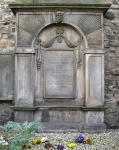
I paused at the church next door to read a sign of notable people buried there in the church cemetary. Much to my surprise, Adam Smith is buried there, so I made my pilgrimage of a few more steps to his graveside. Adam Smith, besides his importance in economics, was one of many people who played a role in the Scottish Enlightment, an intellectual surge in the 18th century that has had profound implications to the modern world. I’m currently reading How the Scots Invented the Modern World, by Arthur Herman. It provides a fascinating political and intellectual history of this period and how it came to have the influence it did. This morning’s reading at breakfast provided insights into my own experience several years ago in the Presbyterian Church. The congregation I was a part of described itself as a “New Light” congregation and followed a relatively humanist theology. This contrasted with more conservative Presbyterian Churches which follow a more literal biblical theology. What I read was that this difference in the Presbyterian Church (and others, for that matter), goes back hundreds of years. John Knox, whose teachings became the basis of the early Presbyterian Church, was a Protestant reformer of the Calvinist persuasion, believing in strict biblical literalism. 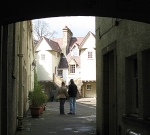 Francis Hutcheson, in the early 18th century, developed a more humanist and less bible-centered theology and became known as one of the “New Light” ministers. His teachings had a profound influence on a generation of students at the University of Glasgow, including Adam Smith. In Hutcheson I find a strong intellectual and philosophical kinship.
Francis Hutcheson, in the early 18th century, developed a more humanist and less bible-centered theology and became known as one of the “New Light” ministers. His teachings had a profound influence on a generation of students at the University of Glasgow, including Adam Smith. In Hutcheson I find a strong intellectual and philosophical kinship.
[added 5/26/08:] One of the really great things about the Old Town of Edinburgh is the little walkways that run off the streets. Here is just one, showing how there was a little tease of a view from the street with a very nice courtyard in front of a small neighborhood once you got inside and away from the street.
Exploring in Edinburgh took me, among other places, to Jenner’s Department Store. While we were on the tour Betty, one of the tour members, had recommended I visit Jenner’s. It really was spectacular, with a huge open gallery with wooden railings. It was also like a rabbit warren inside, with the store apparently constructed within a number of connected buildings. As a result, stairways didn’t always lead where you expected. But, I made it out alive and began looking for a place to have lunch.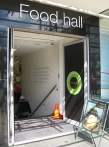
A few doors down from Jenner’s, I saw some steps going downstairs under lettering that said “Food Hall” and a small sidewalk sign for the M & S Cafe. I figured it was a small cafe where I could pick up a quick sandwich and keep on exploring. 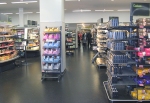 I was able to find a sandwich, but was surprised to discover that this unpretentious entrance led to a vast underground supermarket. It seemed that this busy underground grocer was busy serving both the local office workers and local residents. I sure love exploring; you never know what you’ll find when you start checking out little things like this.
I was able to find a sandwich, but was surprised to discover that this unpretentious entrance led to a vast underground supermarket. It seemed that this busy underground grocer was busy serving both the local office workers and local residents. I sure love exploring; you never know what you’ll find when you start checking out little things like this.
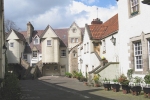
Leave a comment